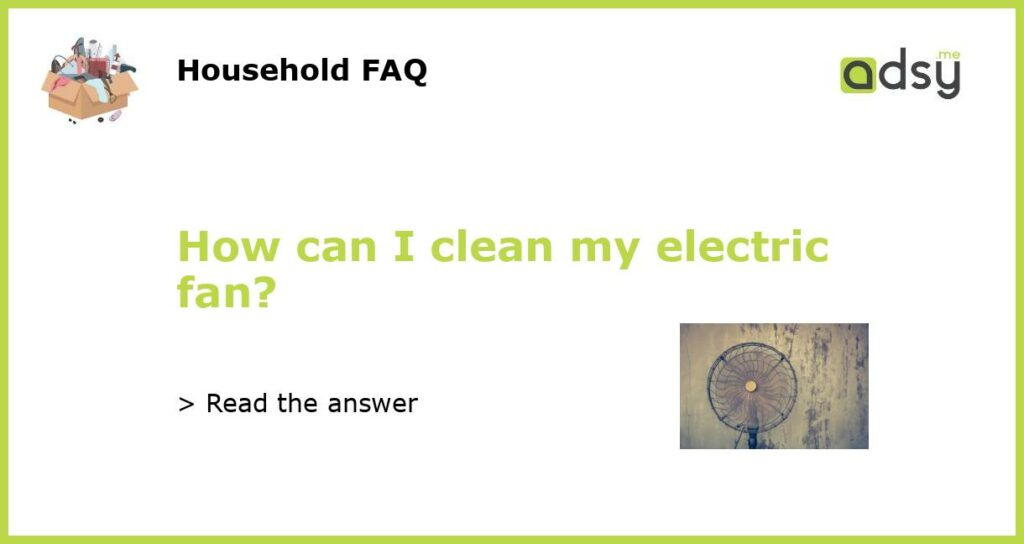Understanding Why Cleaning Your Electric Fan is Essential
An electric fan is an essential appliance in most households, especially during summer. It helps maintain a comfortable indoor environment by circulating cool air. Over time, electric fans collect dust, dirt, and grime, diminishing their performance and appearance. A poorly maintained electric fan can harbor allergens and cause respiratory problems, especially for individuals with allergies or asthma. It is therefore essential to know how to clean your electric fan to keep it working effectively and prevent health complications.
The Tools You Need for Cleaning Your Electric Fan
To clean your electric fan, you need to assemble a few tools and supplies, such as a screwdriver, microfiber cloth, sponge, mild detergent, and compressed air canister. Before disassembling the fan, unplug it from the socket and place it on a flat, stable surface. Make sure that the electric fan is entirely disassembled before proceeding to clean each part thoroughly. It would help to take a close look at the manufacturer’s instructions, particularly when dealing with intricate models such as tower fans or bladeless fans.
How To Clean the Blades and Grills of Your Electric Fan
You can clean the blades and grills of your electric fan using a microfiber cloth or a sponge dipped in mild detergent and water. Apply a small amount of detergent on the cloth or sponge and gently wipe the blades and grills in a downward motion. For hard-to-reach areas, you can use a compressed air canister to blow off dirt and dust. Avoid using abrasive cleaning products or excessive water, as these can damage the electric fan’s internal components or cause electrical shocks. Once you are done cleaning, rinse off the detergent with a clean, damp cloth and let the parts dry completely.
Cleaning the Motor and Internal Components of an Electric Fan
Cleaning the motor and internal parts of the electric fan requires more caution and expertise to avoid damaging the electrical components. Avoid using water or detergents, as these can cause electrical short circuits or spark fires. Instead, use a compressed air canister or a soft-bristled brush to gently remove dust and debris from the motor and other internal parts. If you notice any broken or damaged components, it is best to consult a professional electrician or the manufacturer for repair or replacement.
Maintaining Your Electric Fan for Longevity and Optimum Performance
Cleaning your electric fan is not enough to guarantee its longevity and optimum performance. You need to practice other maintenance tips, such as regular blade and motor lubrication, oiling the bearings, and testing the electrical connections. If you notice any unusual noise or performance issues, unplug the electric fan and seek the help of an expert. Keep the fan in a cool, dry place, away from direct sunlight or moisture. With proper care and maintenance, your electric fan should serve you for several years.






